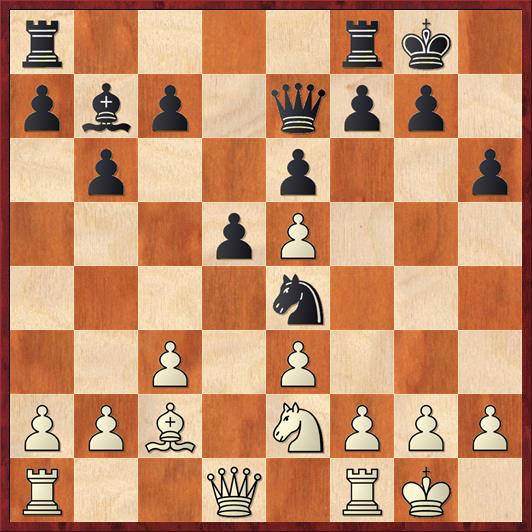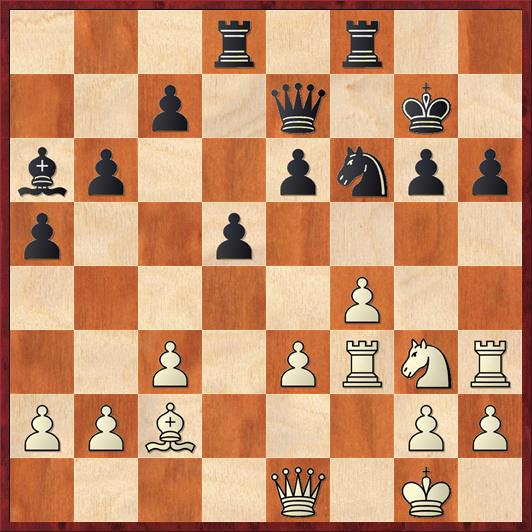Unlike a good mystery novelist, I will not keep you in suspense. I won my game in the last round of the Kolty Chess Club Championship. That gave me a record of 6-1 and a tie for first place with Eric Steger, who also went 6-1.
I don’t know yet for sure, but I think it’s virtually certain that Eric won the title of chess club champion on tiebreaks. The only tiebreaker I could conceivably defeat him on would be head-to-head record, because I won our individual game. However, in chess, head-to-head record is not a traditional tiebreaker. Eric deserves the title of chess club champion, because he beat the top three seeds. As the #4 seed I was the beneficiary of his success, because it allowed me to tie for first without having to play any of those players.
Regardless of who gets the title, I was ecstatic with the way I played in this tournament. It is the first time since 1993 that I have won or tied for first in a rated open tournament! Unlike many other masters, I don’t have a long list of tournament wins. So I treasure each one.
In the last round I played against Paulo Santanna, and expected a tough game because I would be Black and because he is very close to me in rating (2075, and the #5 seed in this tournament). I prepared pretty hard for this game, because I knew he played Jobava’s opening 1. d4 Nf6 2. Nc3 d5 3. Bf4. (I’m not sure what the official name of this variation is, but it ought to be called Jobava’s opening because he has popularized it.)
To win as Black, you sometimes have to play a little bit provocatively, so that White will be enticed into overextending his position. Of course if you play too provocatively you’ll just play bad moves and lose. The trick is somehow to get a position where you look as if you’re in trouble, but you really aren’t. A very tricky thing to do, but I worked this strategy to perfection last night.
Paulo Santanna – Dana Mackenzie
1. d4 Nf6 2. Nc3 d5 3. Bf4 Nh5
A little bit provocative already. Black loses a tempo to chase the bishop.
4. Bg5 h6 5. Bh4 Nf6
This was my innovation, worked out with Rybka. It’s partly psychological: If 6. Bxf6 ef we have transposed into Veresov’s Opening, and I’m counting on the fact that he doesn’t want to play that. (If he did, he would have played 3. Bg5.)
6. e3 e6 7. Bd3 Be7 8. Nf3 O-O 9. O-O …
All planned in advance.
9. … Nbd7 10. Ne2 b6 11. c3 Bb7 12. Bc2 …
Obviously with ideas of setting up a queen-bishop battery.
12. … Ne4?!
Maybe just a touch too ambitious?
13. Bxe7 Qxe7 14. Ne5 Nxe5 15. de …

FEN: r4rk1/pbp1qpp1/1p2p2p/3pP3/4n3/2P1P3/PPB1NPPP/R2Q1RK1 b – – 0 15
Now comes the first key move of the game.
15. … Qg5!
Definitely provocative. White has to play f4, which gains a tempo for the attack by hitting Black’s queen. But the compensation for Black is that the square e4 becomes a beautiful outpost for his knight, and this makes it much harder for White to get an effective attack on the kingside.
16. f4 Qh5 17. Qd3 g6
I had lots of options here. I chose this one because I didn’t ever want to be tempted to play … Nc5?? Qh7 mate. The downside is that it is a little bit passive and gives White more time to build his attack.
18. Rf3 …
Perhaps I should mention that from now through the end of the game I was able to predict almost all of my opponent’s moves. That makes chess very easy.
18. … Qh4 19. Raf1 …
Of course 19. Rh3? Qf2+ would be bad for White.
19. … Kg7 20. Rh3 Qe7 21. Ng3 a5 22. Rf3 Ba6 23. Qd1 Rad8!
A new theme emerges. Black would be glad to let White take on e4 because it opens up the d-file.
24. Qe1 f5!
Finally the time has come for this move, which I avoided earlier because it tends to weaken Black’s kingside. (I do think that it was playable earlier, but I didn’t want to play it until I had to.)
25. ef Nxf6

FEN: 3r1r2/2p1q1k1/bp2pnpp/p2p4/5P2/2P1PRNR/PPB3PP/4Q1K1 w – – 0 26
Here is where the game really turned around. Until this point Paulo had been playing confidently and was well ahead on the clock: I think he had around 25 minutes remaining to 15 minutes for me. His intuition told him that White has to be winning here. “There must be a sacrifice,” he told me after the game.
So Paulo started squandering huge amounts of time, looking for the master stroke that would clinch his victory. I could almost see the steam coming out of his ears. Nevertheless, there is no sacrifice. (According to the computer, it’s doubtful that White even has an advantage.)
26. f5?! …
Probably not the best move, but it’s the only way to loosen up Black’s position. White’s problem can be stated very simply: he’s placed all of his pieces in front of his pawns. Aside from this one pawn break, he has no way to weaken Black’s kingside… except to sacrifice a piece.
By the way, the computer’s top choice is 26. Nh1, a move that would not occur to very many humans.
26. … ef 27. Bxf5? …
For better or for worse, I think White should have tried the piece sac 27. Nxf5+!? But I just didn’t believe it worked, and after many minutes of analysis Paulo couldn’t convince himself that it would work either. Rybka evaluates the position after 27. Nxf5 at about +0.6 pawns for Black; some compensation for White but not really enough.
At this point a wonderful thing happened: I saw how the game was going to end! This is, of course the Mike Splane Question: How am I going to win this game? Earlier in the game I had no clue. But here I saw the whole thing: I’m going to put my knight on e4, he’s going to trade, and I will play a back rank check followed by Rf1 checkmate. When I saw that Rf1 was checkmate it was like a jolt of electricity. I knew that this is exactly the sort of thing a person in time trouble might overlook. It’s ironic: Black’s position looked perilous but was actually safe; White’s position looks safe but is actually perilous.
On the other hand, if he doesn’t take my knight on e4, it’s once again an awesome piece, keeping White’s queen at bay and threatening … Ng5 winning the exchange. Really White has to take, but then things come unglued.
27. … Ne4! 28. Bxe4 de 29. Nh5+? …
Still chasing the mirage of a mating attack.
29. … gh 30. Qg3+ Kh7 31. Rxf8 …
Here, of course, 31. … Rxf8 would be completely winning for Black, but I wanted to play the idea that I foresaw back on move 27.
31. … Rd1+! White resigns
Of course 32. Kf2 Rf1 mate. Otherwise White has to give up his queen to stop mate, but even that doesn’t really work.
Here are the final standings:
1-2: Eric Steger, Dana Mackenzie 6-1
3-6: Paolo Santanna, Shreesh Nanda, Vahak Mandjian, Marcio Saito 5-2.

